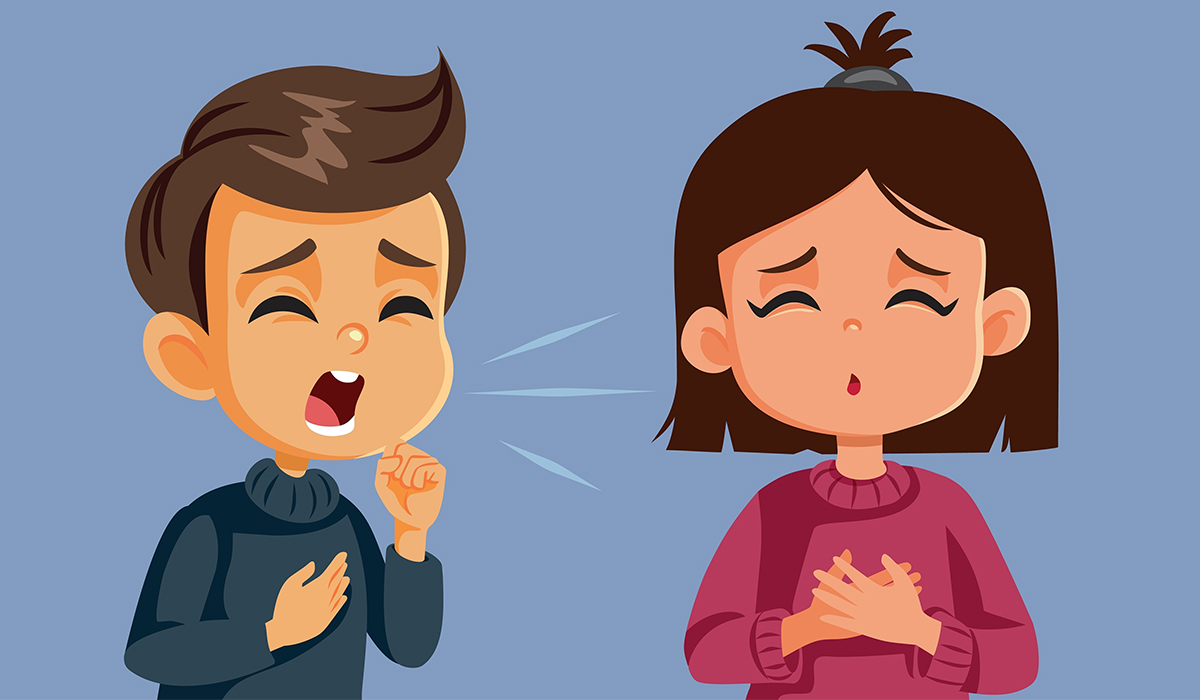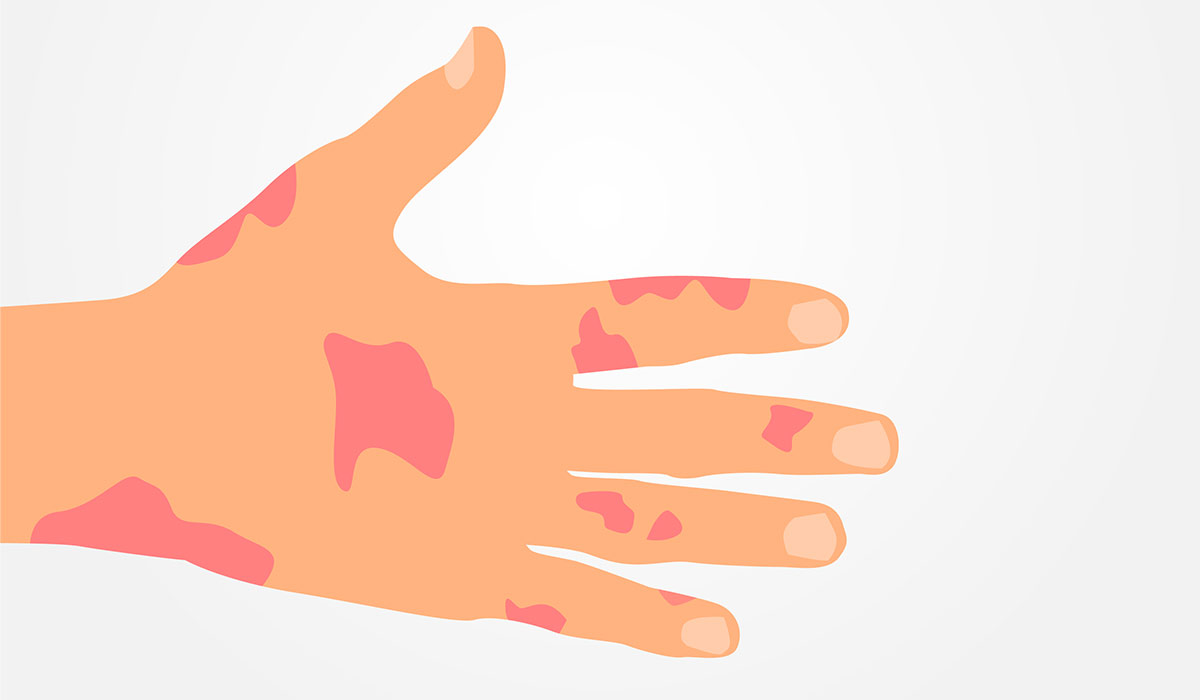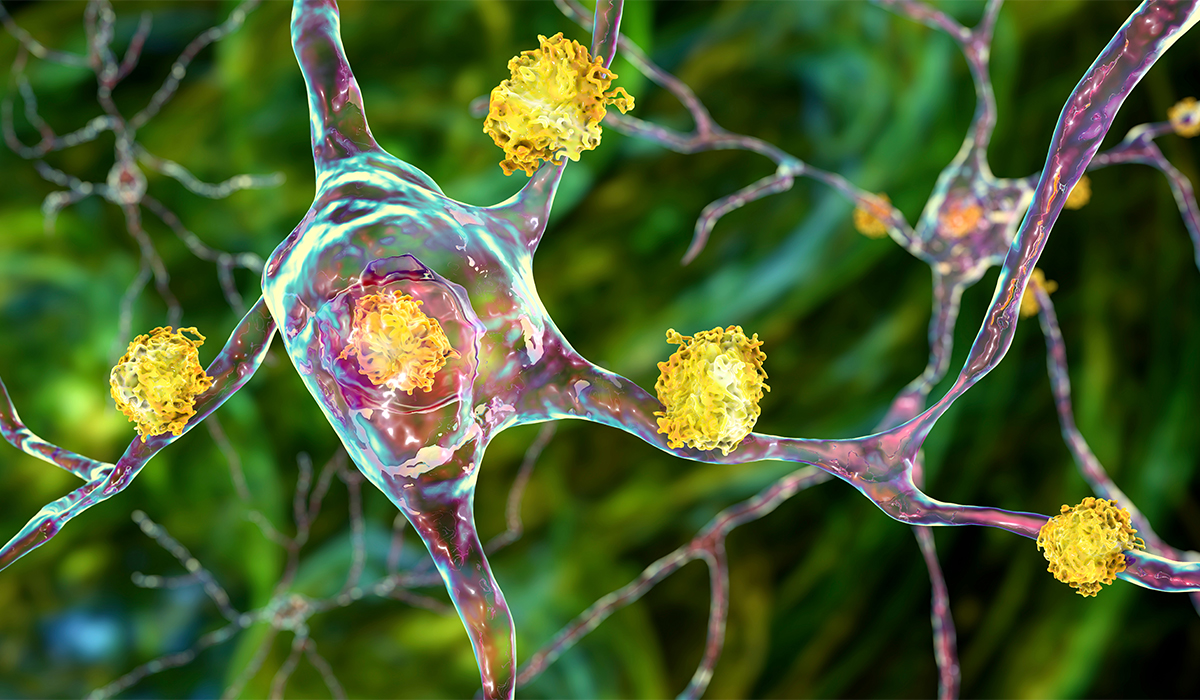An adult infected with the influenza virus can infect others within 3-5 days of the onset of influenza symptoms, while a child suffering from influenza is a source of infection for up to seven days (usually up to 3 days after the fever subsides).
The flu symptoms are very intense. It develops rapidly – the patient’s condition deteriorates within a few hours. People who feel relatively well in the morning have a high fever and severe muscle pain in the evening.
The severity of flu symptoms distinguishes it from the common cold and other viral infections.
Flu and common cold – differences
Despite the similar clinical picture, there are several differences:
- Flu symptoms usually have a rapid onset, while common coldsymptoms begin with a 1-2 day period of general malaise and weakness (symptoms increase gradually);
- Influenza is more often accompanied by high temperature, muscle and joint pain, and chills;
- In patients with influenza, the runny nose is not so severe; in turn, in people with a common cold, it is a dominant symptom;
- Influenza is a disease that leads to various complications, such as respiratory failure or pneumonia.
Diagnosis of influenza virus is necessary in hospitalized patients who develop complications of influenza, e.g., pneumonia.
Symptoms
Flu symptomsappear suddenly and are very intense – their intensity is characteristic of this disease.
Influenza symptoms include:
- high temperature, which rises quickly and even reaches over 39 degrees Celsius,
- intense headache (most often in the frontal and retrobulbar area),
- chills,
- severe pain in muscles and joints,
- extreme exhaustion – fatigue and the feeling of being broken down can persist throughout the illness and later, even up to 2-3 weeks after the symptoms disappear.
Additional, no less troublesome signs often accompany the main symptoms of influenza:
- dry, tiring cough – you may have the feeling that something is stuck deep in your throat, which irritates and forces you to cough;
- sore throat in the flu occurs less often and later in the disease;
- runny nose, if it does appear, it is usually not immediately and is stingy;
- lack of appetite;
- dizziness;
- conjunctivitis;
- stomach pain;
- sometimes in children and adolescents, diarrhea and vomiting.
During the first 4-5 days of flu, patients have most of the symptoms listed above. After some time, headache, high fever, and cough (which changes from a dry to a wet cough) may also be accompanied by pain in the eye sockets and photophobia.
Flu symptoms should start to subside after 5-7 days: fever drops and headache subsides. Other symptoms are also slowly becoming less troublesome. But you should not get out of bed immediately and try to return to your daily activities or work: flu treated too briefly or poorly treated can give serious complications, so you need to stay at home for up to 2 weeks.
Causes
Influenza is caused by influenza viruses belonging to the family Orthomyxoviridae, which multiply in the epithelium of the respiratory tract.
Influenza viruses are transmitted:
- by droplet (at a distance of about 1 m),
- by contact through secretion-contaminated surfaces and hands,
- by inhalation, over longer distances on aerosols,
- there are no reports of transmission through food or water.
It is worth knowing that epidemiologists divide influenza into two types: seasonal and pandemic. Seasonal fluoccurs each year during the epidemic period (usually from September to April) and is most often caused by viruses of the H1N1 or H3N2 subtypes.
Pandemic flu, in turn, can be caused by other subtypes of the virus. Due to the lack of immunity, the infection spreads very quickly, which is why there are many more patients than in the case of seasonal flu – then we are talking about a global epidemic, or a pandemic (e.g., Spanish flu pandemic) that occurs every few decades.
If the doctor – based on the symptoms – suspects the patient has influenza, he should refer the patient for tests that will confirm or exclude influenza. Influenza tests are based on:
- viral antigens identification,
- genetic material of the virus collected from the patient.
The most commonly used flu testsare:
- Rapid diagnostic tests – the material is from a swab from the nasopharynx. They allow us to determine the presence of influenza virus (type A or types A and B) within 15-30 minutes. They are expensive and their sensitivity is moderate. These tests distinguish between type A and type B viruses and indicate the AH1N1 subtype.
- Virological tests – the most accurate influenza diagnostic techniques. This group includes immunofluorescent and enzyme immunoassays – giving results within 24 hours; RT-PCR tests or in situ hybridization – allowing the detection of viral RNA in the material from the patient, but the result is expected up to several days. They are sensitive but expensive, so we use them in challenging cases.
- Serological tests – to confirm the contact of the tested person with antigens of the virus post factum. The presence of virus-specific antibodies indicates that the patient has had influenza in the indefinite past. These studies are mainly used in retrospective analysis.

Treatment
Due to the risk of dangerous complicationsof influenza, you should not treat it yourself, let alone try to “pass” it. Depending on the age, general health of the patient, and possible chronic diseases, the doctor should indicate the best treatment.
If they say there are no serious risks, the specialist will only recommend flu relief and rest. In case of suspicion of influenza, we should call the doctor at home so as not to go to the clinic and not to expose others to the disease.
Symptomatic flu treatmentincludes:
- Taking antipyretics and drugs to relieve other symptoms of infection, such as headache and muscle pain.
- Using syrups that moisturize the respiratory tract and soothe a tiring dry cough.
- Taking painkillers. Preparations with a disinfecting effect and at the same time moisturizing the mucous membrane will help with a sore throat.
- Drinking large amounts of fluids. During a fever, the body loses a lot of water, so it needs to be replenished. In addition, by drinking, you moisturize the mucous membranes. Drink herbal and fruit teas (elderberry, raspberry, wild rose, linden flower, hibiscus), which contain vitamin C and have a warming, diaphoretic effect and thus reduce fever. Avoid strong black tea – it will dry out the throat mucosa.
- Air humidification. Dry nose and throat mucosa are more susceptible to bacterial infections.
- Gargling– water with salt (a teaspoon of salt in half a glass of lukewarm water), chamomile or sage infusion have a disinfecting effect and moisturize the mucous membrane, thanks to which they will relieve a sore throat and a tiring dry cough.
- Easy to digest and rather liquid diet.
- Rest – lie in bed and avoid all exertion. It will allow the body to gather all its strength to fight the disease.
In people from high-risk groups – it is recommended to treat influenza with new-generation drugs, i.e., antiviral and anti-influenza drugs. These are neuraminidase inhibitors active against viruses A – whose task is to block the multiplication of the virus. For these medications to work properly, they need to be taken within 48 hours of the start of flu symptoms. Before administering drugs from this category, it is necessary to conduct a test to confirm that the patient has influenza.
Flu and its associated symptoms can last from 3 to 7 days. In some cases, the disease can last up to 2 weeks from the onset of the first symptoms. Its duration depends on the strain of the virus, the immune system, and the severity of the ailments.

When should a flu patient go to the hospital?
A person suffering from influenza should as soon as possible go to the hospital if they have the following symptoms:
- spitting up blood or pink-red discoloration of saliva,
- very high temperature, reaching over 40 degrees Celsius,
- feeling of severe pain or squeezing in the chest,
- breathing and gasping problems,
- very low blood pressure,
- a sudden feeling of weakness, fainting when getting out of bed,
- problems with movement,
- convulsions,
- lethargy, delirium, hallucinations,
- dehydration symptoms – oliguria, dizziness, dry mouth,
- bruising around the mouth,
- petechiae or bluish skin rash,
- episodes of loss of consciousness, disturbances of consciousness, and problems with awakening the patient.
Flu complications
Complications of influenza usually appear in all patients. The special risk groupincludes:
- people over 65,
- children under 5 years of age,
- pregnant women (especially in the second and third trimester),
- overweight/obese people (BMI over 40),
- people with chronic diseases: heart, lungs, immunodeficiency (e.g., HIV infection), diabetes, congestive heart failure.
Complications of the fluinclude:
- secondary bacterial pneumonia and influenza pneumonia (most commonly caused by Haemophilus influenzae, Streptococcus pneumoniae, and Staphylococcus aureus);
- bronchiolitis (especially in infants and children);
- strep throat;
- sepsis (infrequently);
- very rarely (usually in children) Reye’s syndrome – is usually associated with taking acetylsalicylic acid preparations;
- myocarditis;
- meningitis;
- myositis;
- multiple organ failure (rarely);
- encephalopathy;
- transverse myelitis.
It may also lead to the exacerbation of chronic diseases – for example:
- asthma,
- obstructive pulmonary disease,
- cardiovascular ailments,
- heart failure,
- ischemic heart disease.
Flu in Children
Influenza in childrenis one of the most common viral respiratory diseases. The disease is caused by the influenza virus, which causes troublesome symptoms, including fever. Parents always ask how long flu fever lasts in children. In the case of the flu, it usually lasts a few days. There are other troubling flu symptoms in children as well.
In this case, home remedies for the flu in children will not help. It is necessary to see a doctor who will prescribe flu medicine for children. Otherwise, severe complications may occur.
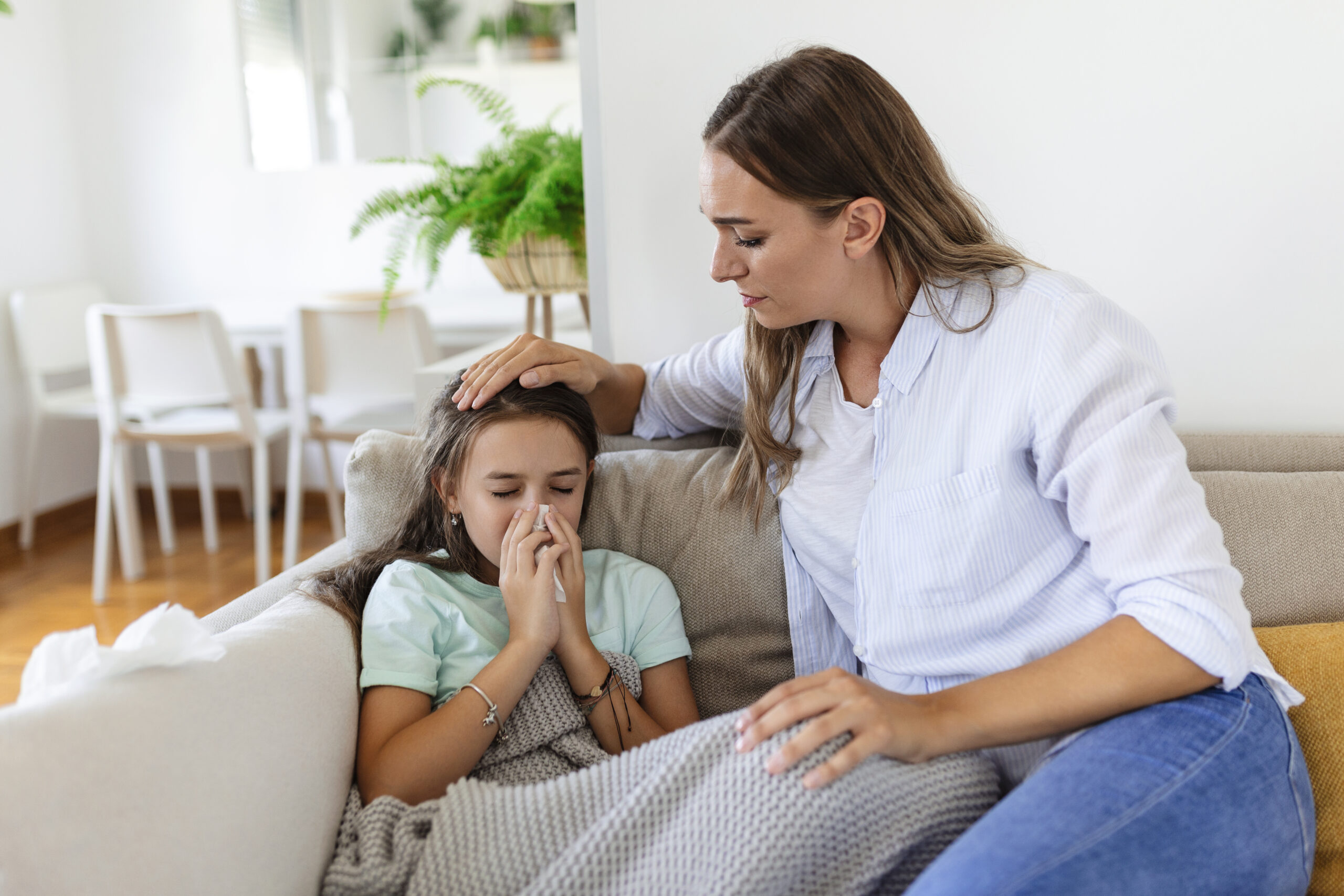
Flu in children – causes and symptoms
The cause of the diseaseis influenza A or B virus. The disease is transmitted by droplets. That is why it can be easily transmitted by direct contact with a sick person and by touching objects belonging to the infected person.
People who are particularly at risk of infection include children because their immune systems are still immature. They are also at a high risk of developing post-influenza complications – this applies especially to children with immune disorders or chronic diseases.
The child’s immune system is immature – so the infection course can be much more severe than in adults. In addition, an adult is contagious for five days after symptoms disappear. The child can be contagious for ten days or more (up to three days after the fever is gone).
Early flu symptoms in childreninclude:
- fever,
- chills,
- headache,
- muscle pains,
- tiredness.
Next, it combines with the symptoms related to the respiratory system:
- sore throat (especially when swallowing, the throat is also red),
- cough,
- runny nose,
- conjunctivitis and enlarged lymph nodes in the neck.
Gastrointestinal symptoms may also occur, such as:
- diarrhea,
- nausea,
- vomiting.
It usually takes about two weeks for a complete recovery.
Influenza in children – diagnosis
Diagnosisis usually made based on symptoms. To be sure, tests based on molecular biology tests or rapid immunofluorescence tests can be performed.
Influenza in children – treatment
Treatment of influenza in childrenconsists in relieving the symptoms of the disease. Flu medicines for children are antipyretics and painkillers. Depending on the accompanying symptoms, the doctor may also recommend antitussives (cough medicines for children in the form of syrup or gel) or medicine soothing rhinitis.
It is also important to properly hydrate the child (e.g., warm teas with honey and lemon, and natural fruit juices). In addition, a patient needs a lot of sleep and rest. You should also ventilate the room frequently.
It is important to remember that we do not treat influenza with antibiotics. The doctor may prescribe it when he suspects an additional bacterial infection or prophylactically – to prevent complications.
How to prevent the flu?
Influenza can be prevented – and it is worth it not only because of the severe course of this disease but also because of its possible complications.
The best flu prevention methods are:
- annual flu vaccinations, especially in high-risk groups;
- washing your hands regularly with soap and water, and when this is not possible, use an alcohol-based hand sanitizer;
- avoiding contact with sick people;
- when flu symptoms occur, stay at home, and when it is necessary to go out – avoid crowds and gatherings;
- covering the nose and mouth when coughing and sneezing, preferably with disposable tissues, and when it is impossible to sneeze into the bend of the elbow (never into the hands).
Sources
- Influenza. NIH.
https://www.niaid.nih.gov/diseases-conditions/influenza. - Cold Versus Flu. CDC.
https://www.cdc.gov/flu/symptoms/coldflu.htm. - Clinical manifestations of influenza and performance of rapid influenza diagnostic test: A university hospital setting. NIH.
https://www.ncbi.nlm.nih.gov/pmc/articles/PMC8485631/. - Flu: Overview NIH.
https://www.ncbi.nlm.nih.gov/books/NBK279459/. - Orthomyxoviruses. NIH.
https://www.ncbi.nlm.nih.gov/books/NBK8611/. - Influenza. NIH.
https://www.ncbi.nlm.nih.gov/books/NBK459363/. - A Narrative Review of Influenza: A Seasonal and Pandemic Disease. NIH.
https://www.ncbi.nlm.nih.gov/pmc/articles/PMC5337761/. - Complications of Viral Influenza. NIH.
https://www.ncbi.nlm.nih.gov/pmc/articles/PMC7172971/. - Influenza: Diagnosis and Treatment. NIH.
https://pubmed.ncbi.nlm.nih.gov/31845781/. - Influenza: overview on prevention and therapy. NIH.
https://www.ncbi.nlm.nih.gov/pmc/articles/PMC6478960/. - Effect of gargling with tea and ingredients of tea on the prevention of influenza infection: a meta-analysis. NIH.
https://www.ncbi.nlm.nih.gov/pmc/articles/PMC4866433/. - Complications of viral influenza. NIH.
https://pubmed.ncbi.nlm.nih.gov/18374680/. - Influenza in children. NIH.
https://www.ncbi.nlm.nih.gov/pmc/articles/PMC2722601/. - Influenza in Children. NIH.
https://pubmed.ncbi.nlm.nih.gov/31871228/. - Preventing and Controlling Influenza with Available Interventions. NIH.
https://www.ncbi.nlm.nih.gov/pmc/articles/PMC6636328/. - Healthy Habits to Help Protect Against Flu. CDC.
https://www.cdc.gov/flu/prevent/actions-prevent-flu.htm.
